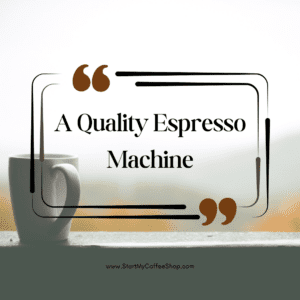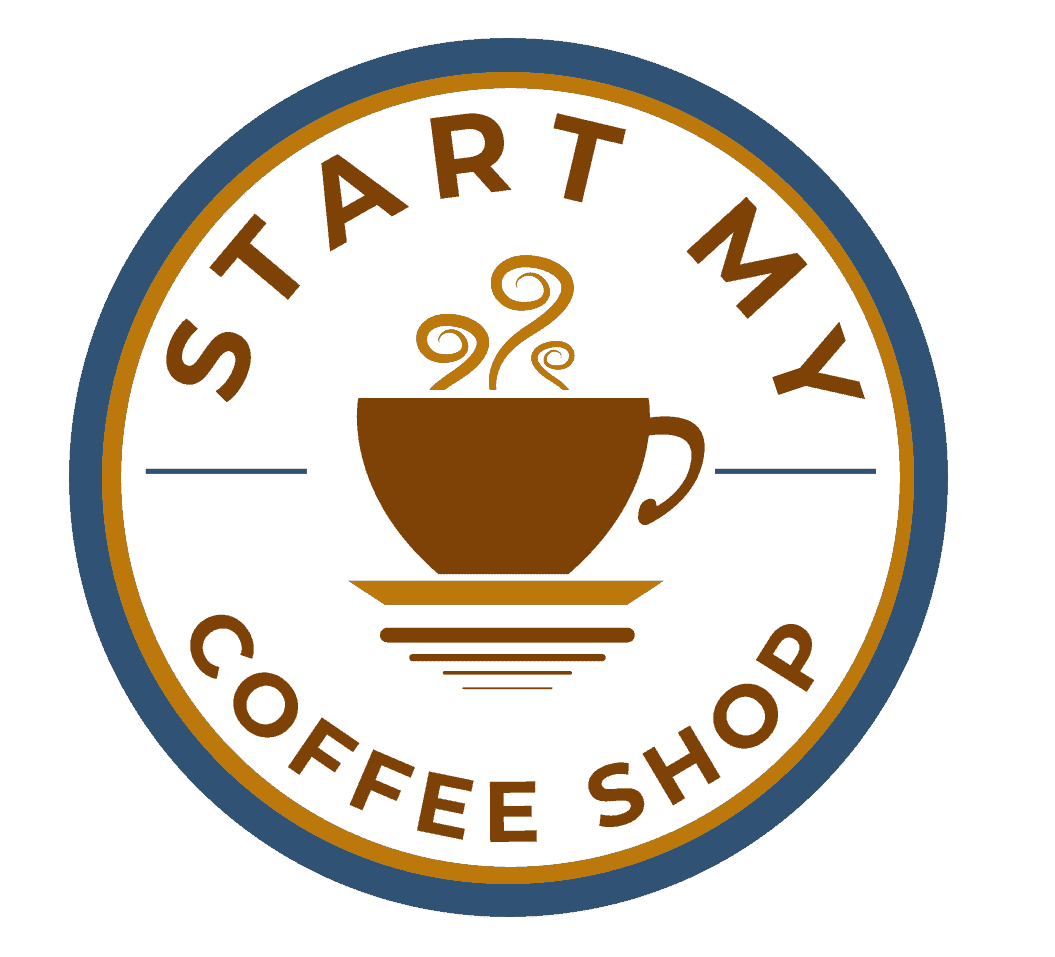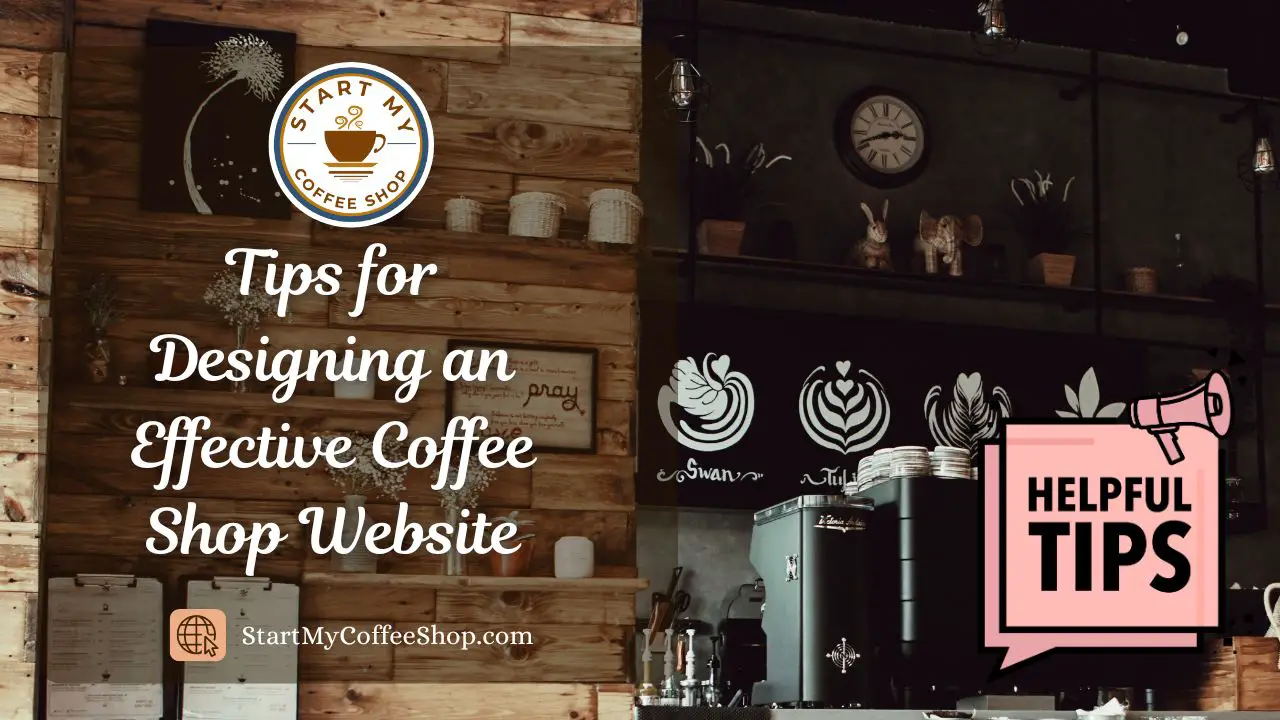Knowing what equipment to buy and where to get it can be overwhelming when opening your first coffee shop. There are so many things to consider, and many of them won’t even cross your mind if you try to make a list of what you need. Lucky for you, we’re here to help.
To open a coffee shop, you will need the following equipment:
- two grinders
- drip coffee makers
- a quality espresso machine
- a water filtration system
- coffee serving devices
- refrigerators and freezers
- storage solutions
- sinks and a dishwasher
- something to cook your food
- a security system
- a POS system
Equipment is one of the most important parts of opening a café, and we want to make sure you will be successful come opening day.
Two High-Quality Coffee Grinders
Not everyone would make this a priority, but grinders are the single most important part of making great coffee. If you need to skimp somewhere financially, don’t let it be in your grinder. A quality grinder can make a $30 coffee pot from the supermarket brew excellent coffee, and a bad one can make your $9000 Seraphim Pour-Over System worthless.
You also need to make sure you have multiple grinders. You will need one for espresso, one for filter coffee, and another if you’re going to serve either decaf or flavored coffee. Keeping all of these types of coffee separate helps preserve the flavors of each.
The best grinder money can buy for espresso is the Mahlkonig EK43. There isn’t much debate on that issue. For your filter or drip coffee, consider something from Baratza, Mazzer, or even just another EK43 (you really can’t go wrong with that machine).
If you plan to have a consistent pour-over bar or just have a smaller space, you may want to invest in something small like a Baratza Forte.
Drip Coffee Makers
Typically, around 30% of all coffee shop sales are from plain drip coffee. You want to make sure that what you have to offer is excellent. There are a lot of options out there, and there isn’t a clear best option. Consider the following when deciding on your drip coffee maker
- Look for a machine that allows you to control both water temperature and flow rate. This will allow you to dial the machine in for each coffee you serve.
- Find something that is easy to take apart and clean. You will need to do that often, so the easier it is, the better.
- Check that the system is going to fit in your space and be compatible with your water line setup. If not, you may end up spending even more money on making changes to the layout of your shop.
- Pro tip: make sure it has a hot water dispenser as well. This will save you a lot of time when making Americanos or hot teas.
A Quality Espresso Machine

Possibly even more important than a good drip coffee maker is a good espresso machine. Other than your grinder, this has the most impact on the quality of your espresso. You will need to decide early on what type of espresso machine fits your business model.
If you are focused on quality, go for either a semi-automatic or manual machine. If you’re investing money into a good grinder, you will want a machine that allows you, the barista, to control what kind of shots you get out. Super-automatic machines can still produce espresso, but they take almost all control away from the barista.
La Marzocco and Nuova Simonelli are two of the most respected names in espresso, but there are other options as well. Just make sure that whatever you purchase has enough group heads for your expected volume, allows you the control you want, and is within your budget.
A Coffee Roaster
Depending on your desired business model, you may need to purchase a coffee roaster. This can be a huge up-front investment but can pay off in the long run. Roasting your coffee allows you complete control over what you’re serving and offers an opportunity for another revenue stream from selling whole-bean coffee. You can sell both to other cafes and your customers in your shop.
However, it can take time and a lot of hard work for that investment to turn profitable. If you do decide you need to purchase a roaster, buying a used or refurbished model can save you a large chunk of change.
San Franciscan, Diedrich, and Probate are your “top-of-the-line” roasters, but there are some other affordable options as well. However, if you can get a better machine used for the same price, you absolutely should.
Make sure you purchase a roaster that is big enough for your business. If you plan to roast to sell to other businesses, you may need a larger machine than if you were just roasting for your café.
If you decide not to roast, just make sure you have a great roaster to partner with that you can count on. There are both national and local options for this, so just find someone you want to work with.
Water Filtration System
I know we said earlier that a grinder is the single largest determining factor in the quality of your coffee, but that is only true if you already have good water. Most coffee is between 98-99 percent water. Make certain that there is a good water filtration system in place, as this will make or break your coffee.
It is usually best to distill your water first and then add in whatever minerals you want to create your desired brew. Barista Hustle has put together a good collection of water recipes for a DIY at-home brewer, but the principles and ratios here can be applied to a commercial setting as well.
We can’t stress this enough: don’t skimp on your water filtration. Take the time to figure out what is going to work best for the coffees you’re serving. We promise it will pay huge dividends in the long run.
Airports, Decanters, and Other Serving Devices
After you’ve made the bigger purchases, you will also need equipment to serve your coffee. Airports are a great, simple way to store and serve your batch-brew coffees. For pour-overs, maybe try purchasing a few glass decanters or carafes. This can add to the presentation when serving a more “specialty” coffee beverage.
Along with that also come your mugs, plates, and other serving vessels. This is a place where you can skimp on costs. Try to find something that looks nice in your café but isn’t going to break the bank. Many customers will be taking their orders to-go anyway and will not even get to use your mugs and plates.
Other Brewing Devices
Unless you will only be serving batch-brew and espresso drinks, you will also need some other equipment for teas, pour-overs, and other brews. Whether you use the Hario V60, the Kalita Wave, a Chemex, an Aeropress, or whatever brewing device you prefer, having a more “theatrical” way to brew a cup of coffee can make for a great conversation starter with customers.
In addition, you’ll need, scales, espresso tampers, milk frothing pitchers, a knock box, and pour-over kettles depending on your shop’s specific menu.
If you want to compete with other “specialty” coffee shops, a refractometer is necessary. VST makes the only coffee refractometer worth buying, and it isn’t cheap. But if you want to take your coffee to the next level, it is a worthy investment. Again, Barista Hustle has a great series on refractometers and their benefits for specialty coffee enthusiasts.
Refrigerators and Freezers

Although most of the beverages you serve may be warm, you will need a fridge to hold your milk, cold brew, and any other cold beverages you may want to serve. If you’re going to serve food items, you may need a larger fridge in the back to keep food supplies in as well.
You will also most likely want to have at least one freezer as well. This can be used to hold frozen food that can be quickly baked in a toaster oven or other food items that you need to keep for longer periods. Prima Supply wrote a great piece on choosing commercial refrigerators.
You will also need a commercial ice machine for iced and blended beverages, as well as customers who just want a cup of ice water.
Storage Solutions
There are a lot of items that fall under this category, but simply put, you need places to put things. Shelving is often an underutilized resource in coffee shops, so make sure you do what you can to use your shelf space as best you can.
You will also need a place to store roasted coffee, paper cups and lids, flavor syrups, clean dishes, pastries, and various other items depending on your exact layout. Take some time to consider what will need to have a “place,” and then spend a little bit of money on a good place for it. This will save you a lot of time and effort down the line.
Two Sinks and a Dishwasher
In any restaurant or coffee shop, sinks and dish cleanliness are vitally important. You will need a smaller sink near your baristas for quick dishwashing needs. The Barista Basics Rinsers from Espresso Parts are so useful they should be considered a necessity.
You’ll also need a larger three-compartment sink in the back of the house to keep up with the dishes that don’t get rinsed by the baristas behind the counter.
Something To Cook Your Food
For any café serving food, cooking equipment becomes an important consideration as well. Some shops can get by with just a microwave for warming up pastries, while others may need nearly a full kitchen. This is an area where you need to look at your menu and your business plan when deciding what equipment you need.
Security System
A good security system is vital in any small business. You and your employees need to feel safe when you’re at work, and you need to be able to lock up at night knowing everything will be as you left it the next day.
Depending on your location and size, there are a lot of different options for you when it comes to security systems. ADT, Vivint, and a host of other companies have offerings, and there may be local security companies in your area as well. Browse around on this one. Make sure you’re getting both the best security and the best price.
POS System
Your point-of-sale (POS) system is vital for you as a business owner. Probably the most popular POS on the market is Square, but they aren’t without competition. Companies like ShopKeep and Toast are starting to give Square a run for their money in recent years.
There are a few key things to look for when choosing a POS.
- Find something easy to use – both for your employees and for the customers
- Look for a system that has a built-in inventory management feature. This is a near necessity, as it will help you keep track of what you have in stock and what you still need to order
- The pricing structure varies across different systems, so make sure you’re paying a fair price. Do the math between different companies and find something that works for you.
Frequently Asked Question
What equipment do I need for a drive-thru or mobile coffee shop?
All of this equipment is still needed in a smaller or mobile coffee shop. Some things may need to be sized down or adjusted, but nothing changes. The only exception to this is a security system. That may not be needed if you pack up and take your shop home each night.
How much does it cost to buy equipment for a coffee shop?
Equipment costs can vary wildly between coffee shop start-ups, and there is no short answer. However, Crimson Cup did some research and found that a brick-and-mortar coffee shop can cost anywhere from $80,000-$300,000.
If you are opening a mobile business, those costs are closer to $50,000-$150,000. To get a better idea of the total cost of starting your coffee shop, click here.
To learn more on how to start your coffee shop check my startup documents here
Please note: This blog post is for educational purposes only and does not constitute legal advice. Please consult a legal expert to address your specific needs.

Hi! I’m Shawn Chun
My adventure in coffee began when I first launched my first coffee shop back in the early 2000s. I had to figure out so many things on my own and to make it worse within 2 years of opening two large corporate coffee chains moved in just blocks away from me!
As I saw smaller and even some larger coffee shops in the neighborhood slowly lose customers to these giant coffee chains and slowly close up shop, I knew that I had to start getting creative…or go out of business.
I (like you may be) knew the coffee industry well. I could make the best latte art around and the foam on my caps was the fluffiest you have ever seen. I even had the best state-of-the-art 2 group digital Nuova Simonelli machine money could buy. But I knew that these things alone would not be enough to lure customers away from the name brand established coffee shops.
Eventually, through lots of trial and error as well as perseverance and creativity I did find a way to not only survive but also thrive in the coffee/espresso industry even while those corporate coffee chains stayed put. During those years I learned to adapt and always faced new challenges. It was not always easy, however, in the end, I was the sole survivor independent coffee shop within a 10-mile radius of my location. Just two corporate coffee chains and I were left after that year. All told the corporate coffee chains took down over 15 small independent coffee shops and kiosks and I was the last one standing and thriving.
Along the years I meet others with the same passion for coffee and I quickly learned that it is not only “how good a barista is” that makes a coffee shop successful, but the business side of coffee as well.
Hence why I started this website you are on now. To provide the tools and resources for up and coming coffee shop owners to gain that vital insight and knowledge on how to start a coffee shop successfully.
Stick around, browse through my helpful blog and resources and enjoy your stay! With lots of LATTE LOVE!
Shawn






